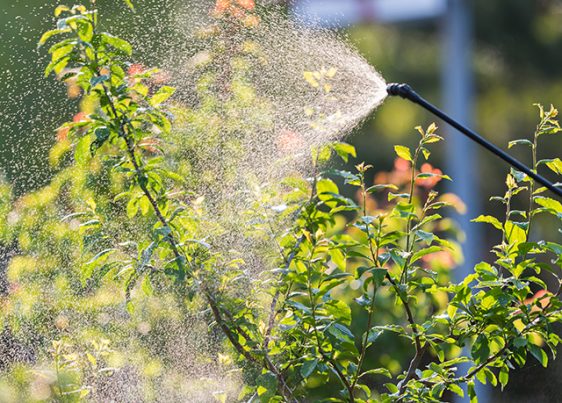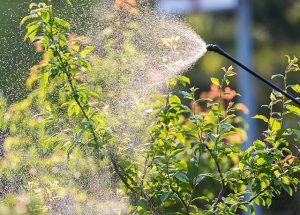
Thiodicarb — toxicity, side effects, diseases and environmental impacts
Thursday, November 16, 2017 by Janine Acero
http://www.naturalpedia.com/thiodicarb-toxicity-side-effects-diseases-and-environmental-impacts.html

Thiodicarb is an insecticide applied primarily on cotton, sweet corn and soybeans. It is also spread among leafy vegetables, cole crops and ornamentals. Thiocarb is used for the control of lepidopterous (butterflies, moths and skippers), coleopterous (beetles) and hemipterous (cicadas, aphids, planthoppers, leafhoppers, and shield bugs) insects. Thiodicarb also acts as an ovicide against cotton bollworms and budworms.
Thiodicarb can be applied using a backpack sprayer, airblast sprayer or aircraft (fixed-wing or helicopter), among others. It can be in the form of a liquid, flowable concentrate, wettable powder, granules, pellets or tablets.
Thiodicarb was first registered in the U.S. in 1984. It has the molecular formula of C10H18N4O4S3.

List of known side effects
Thiodicarb is a toxic chemical that has adverse effects if inhaled and ingested, which may result in abdominal cramps, headaches, depressed appetite, salivation, nausea, vomiting and diarrhea. It can also cause dizziness, sweating, muscle weakness and respiratory discomfort.
Thiodicarb is also known to induce tears, eyelid twitches, pupil contraction, loss of focus, and blurred or dimmed vision when coming into contact with the eyes. While it is not thought to be a skin irritant, open cuts and wounds should not be exposed to thiodicarb to avoid entry into the bloodstream.
A material safety data sheet notes that “workers exposed repeatedly to these substances may exhibit impaired memory and loss of concentration, severe depression and acute psychosis, irritability, confusion, apathy, emotional liability, speech difficulties, headache, spatial disorientation, delayed reaction times, sleepwalking, drowsiness or insomnia.”
Thiodicarb also is known to be toxic to bees and aquatic organisms, with long-term effects.
Body systems affected by thiodicarb
The United States Environmental Protection Agency (EPA) classified thiodicarb as “Group B2 Probable Human Carcinogen” as evidenced in animal studies. It can also damage organs through occupational or prolonged and repeated exposure, as well as cause central nervous system depression and pulmonary edema (excess fluid in the lungs).
According to a chemical fact sheet by the Pesticide Management Education Program (PMEP), “carcinogenic effects noted in experimental animals at acetamide dietary levels of 10,000-80,000 ppm are applicable to humans exposed at a maximum level of 9.3 ppb.”
Items that can contain thiodicarb
Thiodicarb can be applied to a variety of crops, mainly cereals including wheat, triticale, rye, barley, oats; cotton; forage brassicas; grapes; grass seed crops; maize; pulses; sweetcorn; tomatoes; and tobacco. It is used for control of black beetles, budworms, cabbage white butterfly, caterpillars, springtails, stem weevils and tobacco loopers and other fruit pests.
How to avoid thiodicarb
Handlers and applicators of thiodicarb in the workplace are the most prone to exposure and its negative side effects. It is best to follow these precautionary measures to ensure protection from making contact with this toxic insecticide:
- Avoid eye contact by wearing splash proof glasses with side shields, and always have an emergency eye wash at the ready in the work area in case of accidental contact.
- Prevent any contact with your skin by wearing the appropriate protective clothing, with chemical-resistant gloves and footwear.
- In case a respirator is required in the workplace, make sure it is approved by the National Institute for Occupational Safety and Health (NIOSH) or the Mine Safety and Health Administration (MSHA) “in accordance with the appropriate regulatory standards and/or industrial recommendations.”
Where to learn more
Summary
Thiodicarb is an insecticide applied to various crops for the control of lepidopterous, coleopterous and hemipterous insects, as well as slugs and other fruit pests.
Thiodicarb comes in different formulations such as liquid, flowable concentrate, wettable powder, granules, pellets or tablets.
Thiodicarb is a toxic chemical that has adverse health effects if inhaled and ingested; it is a known eye irritant and has skin sensitizing potential.
Sources include:
Tagged Under: Tags: Thiodicarb





